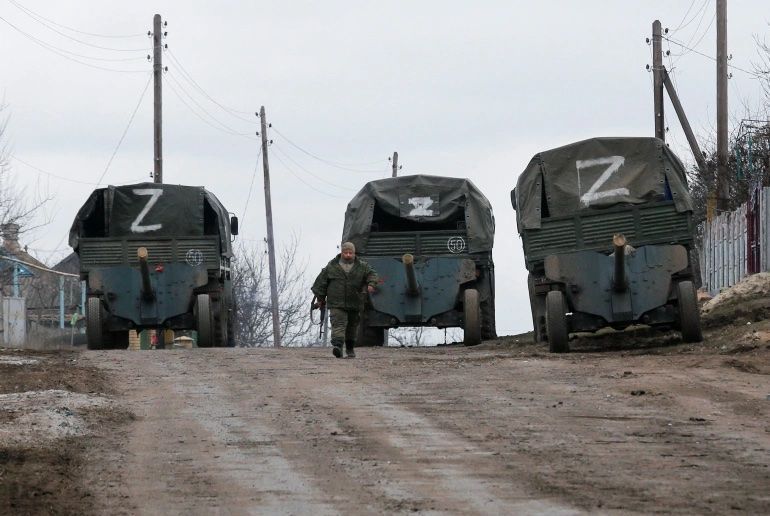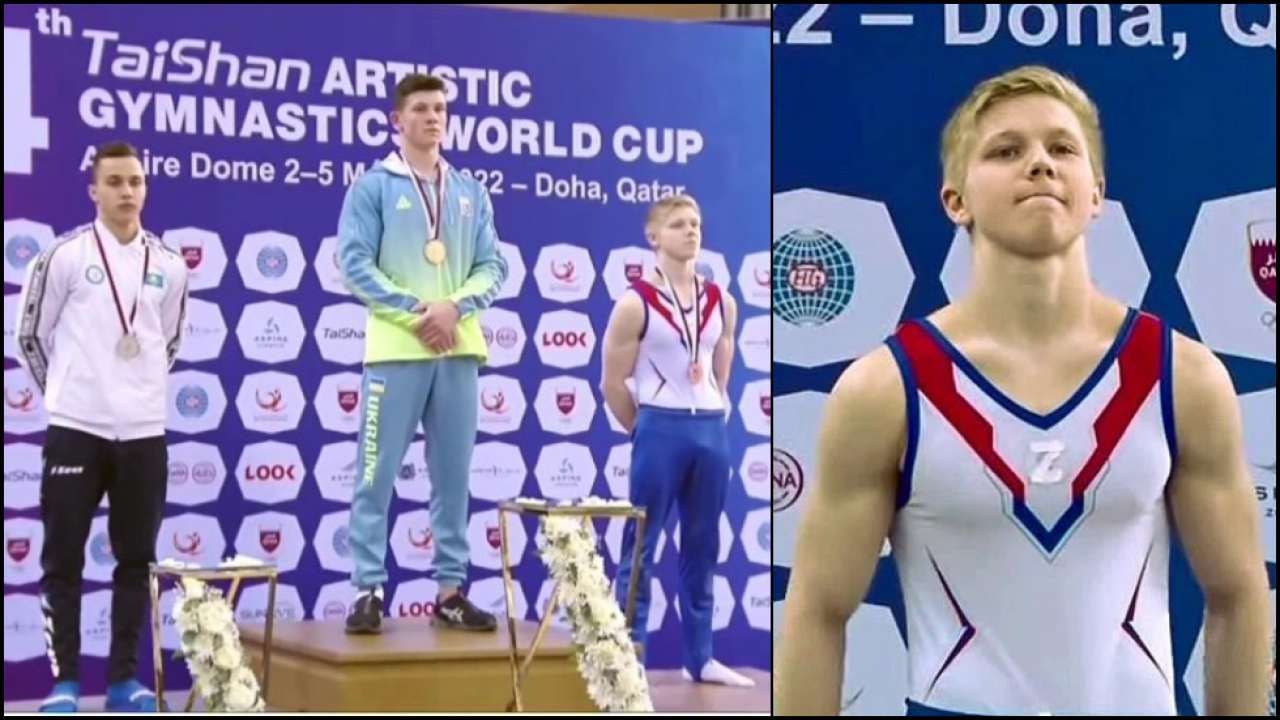Z: Deciphering a symbol of war-mongering through behavioural lens
Can Symbols affect behaviour? This newsletter highlights how language is inherently political and carries historical connotations that can influence human interactions. Words and symbols have both a denotative meaning and a set of connotations based on their usage history.

Background
In a recent video, Novak Djokovic's father, Srdjan, appears to be wearing a shirt with Z symbol expressing his support for Russia. The Serbian player’s father is pictured posing with a fan outside Rod Laver Arena in a video posted on YouTube by a Russian Putin supporter.
In response to the incident, players and their families were reminded by the Australian Open not to display symbols that could disrupt the event. According to Tennis Australia, four people were kicked out. Pro-war symbols like the "Z" symbol are being banned in more countries.Meanwhile, flash mob displays of the symbol by students and messages supporting Russian President Putin have taken to social media.
The Rise and Spread of Z
On Feb 24, 2022, Russian President Vladimir Putin announced a full-scale invasion of Ukraine. A year has passed since that moment, and Ukraine has been tense. Leading to millions of people being displaced by violence, and fearing for their future. But there's something about this story that is worth paying attention to: the symbolism of the use of "z" as a sign of Russian propaganda.
There is a reason why this symbolism has gained so much attention. It seems to be playing a role in the shaping of the current conflict in Ukraine. It also seems to be playing a role in shaping the perceptions of the conflict among the general public in Russia.
As part of the invasion of Ukraine, the Russian military has used various letters, such as Z,V, and O, on their military vehicles. Military experts speculate that the symbols are used for identification purposes, to differentiate Russian army groups and reduce the risk of friendly fire. In Ukraine, locals have employed the "Z" symbol to locate and monitor Russian vehicles on Telegram. The Russian Ministry of Defence has claimed on Instagram that the "Z" symbol is an abbreviation for "for victory," but has also suggested alternative meanings like "for peace" or "for truth." Additionally, another interpretation for "Z" is the Russian word for the west, which could refer to the Western Military District or troops heading westward, with the "V" symbol potentially standing for the east. This suggests that the letters could have multiple meanings.
Certain symbols catch on and spread like wildfire. As the wartime use of the "Z symbol" spread across the world, it has acquired multiple meanings and has increasingly linked with pro-military and Russian identity values. It has taken on various forms, including the orange-and-black striped design of the St. George ribbon, which was originally established in 1769 as a military honor in Russia. The ribbon was named after Saint George, a Roman army officer who became a Christian martyr. After a period of disuse, the ribbon was reinstated as a military award by Putin's government in 2000.

Can Symbols affect behaviour?
In an effort to avoid stigmatizing specific places, the WHO used Greek letters to name COVID variants. Certain letters, like Xi, had to be avoided because they have associations with the Chinese president. This highlights how language is inherently political and carries historical connotations that can influence human interactions. Words and symbols have both a denotative meaning and a set of connotations based on their usage history.
Recent research has shed light on the importance of symbols in-group identity, revealing that they serve a crucial psychological function for groups. Symbols help to solidify a group's existence and make it feel more cohesive, which increases its nativity. The extent to which a group is perceived as a unified entity, rather than a collection of individuals. When a symbol is associated with a group, it reinforces its nativity, which can make the group appear more competent and threatening to outsiders.
The use of symbols by group members is a strategic way to convey a sense of unity and intimidation. It's not just a matter of personal preference or style, but a way to manage a group's social identity. Symbols play an essential role in how groups create and maintain their identity, as well as how they explain social and political revolutions. They can also be used to build trust and cooperation within society.
In essence, the symbolisation of a group as "us" versus "them" is a critical component in creating cohesion between members. For groups that need to maintain power and control over others, identifying with symbols or a particular group of people allows individuals to imagine themselves as part of the "us" group instead of "them." The symbolism of a group serves a vital psychological function in the way we build identity and create a sense of belonging. The spread of the Z symbol associated with pro-military values and Russian identity can be attributed to its ability to strengthen the group identity of war mongers.
The use of symbols in group identity can have a profound impact on how we perceive and interact with different groups in society.
The degree to which a symbol can affect behaviour depends on the meaning it conveys to its audience and the cultural context within which it is used. Research has yielded mixed findings on the role of symbols in bringing people together. While Kolstø's study in 2006 suggested that symbols can sometimes have a divisive effect on a nation, other research studies such as Pratt in 2001, Akaka in 2014, and DeLoache in 2004 argue that symbols can be used to represent and negotiate relationships, potentially promoting unity. While the evidence remains inconclusive on whether symbols have the power to bring people together, they can play an important role in maintaining and building relationships between different groups. The perceived legitimacy of a symbol can also have an impact on its potential to effect change.
 The International Gymnastics Federation (FIG) is calling for disciplinary action after a Russian athlete wore a "Z" symbol next to a Ukrainian athlete after a competition.
The International Gymnastics Federation (FIG) is calling for disciplinary action after a Russian athlete wore a "Z" symbol next to a Ukrainian athlete after a competition.





